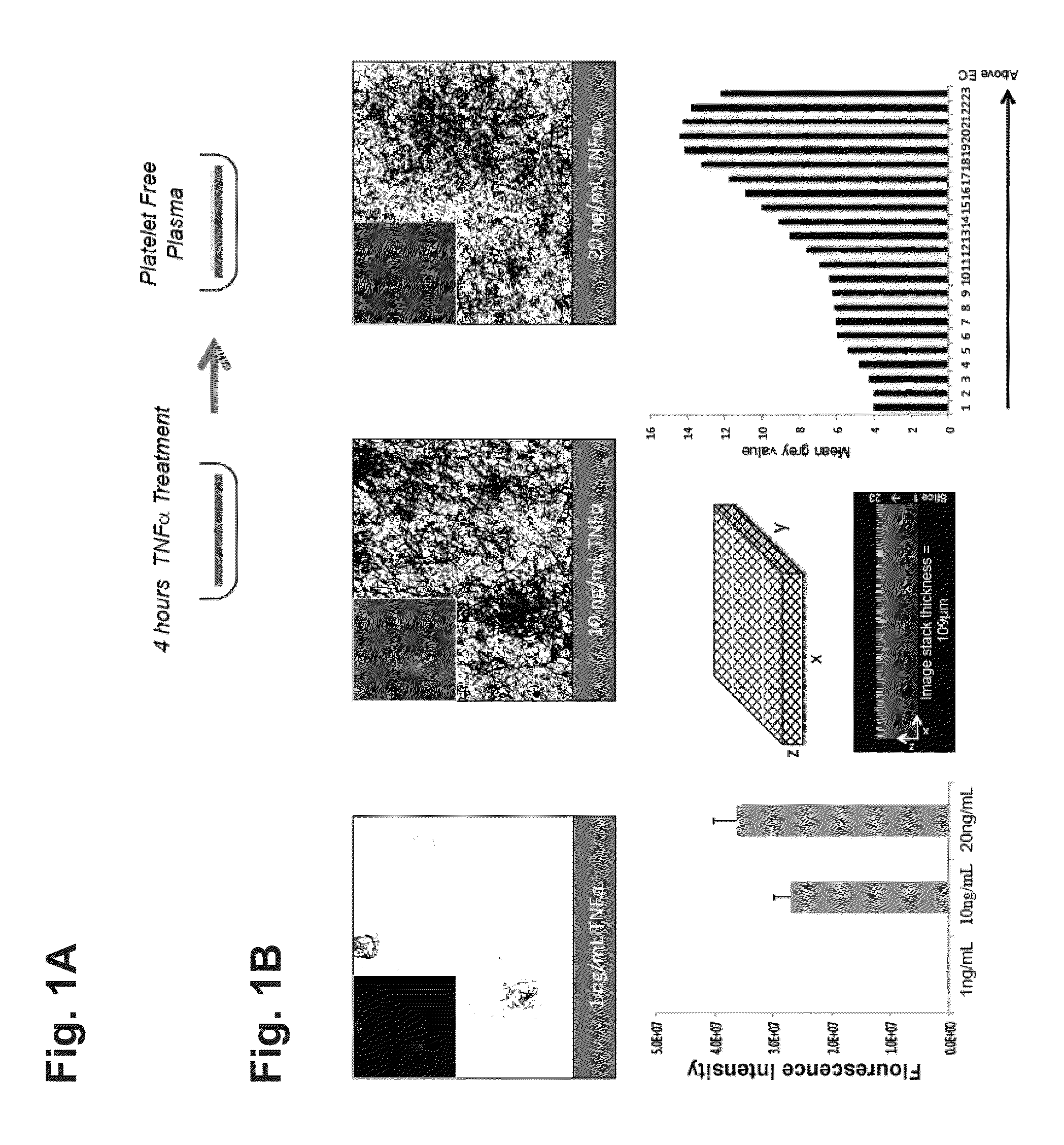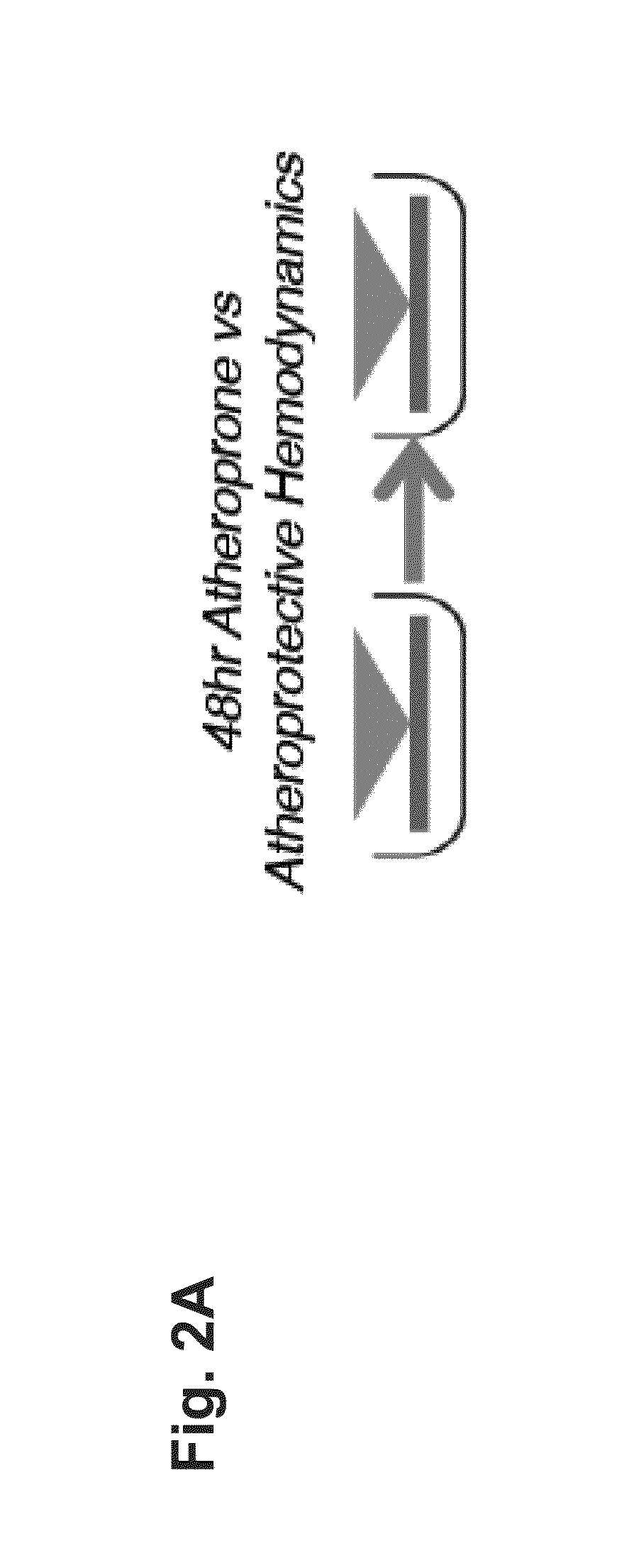In vitro model for pathological or physiologic conditions
- Summary
- Abstract
- Description
- Claims
- Application Information
AI Technical Summary
Benefits of technology
Problems solved by technology
Method used
Image
Examples
example 1
An In Vitro Model for Arterial and Venous Thrombosis
[0296]In the coagulation cascade, thrombin converts fibrinogen to fibrin, which is deposited on the surface of a blood vessel to begin blood clot formation (thrombosis). TNFα is a potent inflammatory cytokine. TNFα and other cytokines have been shown to be potent mediators of endothelial and smooth muscle cell-derived tissue factor in vitro, which mediates fibrin deposition in the vascular wall. Circulating levels of TNFα detected in humans with cardiovascular disease are about 0.01 ng / ml to about 0.1 ng / ml. In healthy individuals, circulating levels of TNFα are much lower or undetectable, for example about 0 ng / ml to about 0.001 ng / ml.
Methods:
[0297]Human endothelial cells were co-cultured with or without smooth muscle cells in the presence or absence of human-derived, region-specific hemodynamics. Endothelial cells were exposed to TNFα at various concentrations and incubated in human, platelet-free plasma supplemented by ALEXA FLU...
example 2
An In Vitro Model for Atherosclerosis
[0320](i) Effects of oxLDL in a Hemodynamic Environment
[0321](a) Methods
[0322]To oxidize LDL, native LDL (nLDL) was dialyzed with PBS for 24 hours to remove EDTA. The LDL was then dialyzed for 3 days in PBS containing 13.8 μM CuSO4. The LDL was then dialyzed with PBS containing 50 μM EDTA for an additional 24 hours. A relative electrophoretic migration number was used to confirm the oxidation level for each batch. Upon completion of oxidation, the oxLDL was stored under nitrogen at 4° C. until use.
[0323]Smooth muscle cells were plated on a first surface of the porous membrane of a TRANSWELL (polycarbonate, 10 μm thickness and 0.4 μm pore diameter, no. 3419, Corning) at a plating density of 20,000 cells / cm2 and allowed to adhere to the membrane for two hours. The TRANSWELL was then inverted and the cells were incubated in reduced serum growth media (M199 supplemented with 2% FBS, 2 mM L-glutamine, and 100 U / ml penicillin-streptomycin) for forty-ei...
example 3
An In Vitro Model for Hypertension
[0364](i) Angiotensin II (ANG2)
[0365]Angiotensin II (ANG2) levels are increased in patients with cardiovascular complications, such as atherosclerosis, diabetes or hypertension. Typical concentrations of ANG2 range from about 1 nM to about 5 nM in healthy patients, and from greater than about 6 nM to about 20 nM in hypertensive patients.
[0366]To assess the effects of ANG2 in the hemodynamic environment, endothelial cells and smooth muscle cells were plated as described above and subjected to 24 hours of shear stress preconditioning with healthy and atheroprone hemodynamic forces. ANG2 at a concentration of 10 nM (10.46 ng / ml) or a DMSO vehicle control (VEH) was added to the upper volume and RNA was collected for gene array analysis.
[0367]Gene array analysis of this condition compared to DMSO vehicle controls revealed many significant inflammatory genes that are upregulated by ANG2. FIG. 13 shows gene expression heat maps for both endothelial cells (...
PUM
| Property | Measurement | Unit |
|---|---|---|
| diameter | aaaaa | aaaaa |
| angle | aaaaa | aaaaa |
| concentrations | aaaaa | aaaaa |
Abstract
Description
Claims
Application Information
 Login to View More
Login to View More - R&D
- Intellectual Property
- Life Sciences
- Materials
- Tech Scout
- Unparalleled Data Quality
- Higher Quality Content
- 60% Fewer Hallucinations
Browse by: Latest US Patents, China's latest patents, Technical Efficacy Thesaurus, Application Domain, Technology Topic, Popular Technical Reports.
© 2025 PatSnap. All rights reserved.Legal|Privacy policy|Modern Slavery Act Transparency Statement|Sitemap|About US| Contact US: help@patsnap.com



